Pancreatic Ductal Adenocarcinoma (PDAC): Treatment hurdles and new advancements (Tumor microenvironment/Immunotherapy/Gemcitabine)- Market Insight, Clinical Trial, Product Analysis, Patent Analysis, Competitive Analysis and Market Forecast – 2023-2033
Pancreatic ductal adenocarcinoma (PDAC) stands as a formidable challenge in the realm of cancer treatment and management. Accounting for more than 90% of pancreatic malignancies, PDAC is a menacing adversary with a 5-year survival rate below 8%. In the not-so-distant future, PDAC is poised to become one of the leading causes of cancer-related death, driven by factors like obesity and type 2 diabetes. Lifestyle elements, such as alcohol and tobacco usage, exert their influence in PDAC’s pathogenesis, further complicating its prognosis.
The existing treatment landscape mirrors the complexity of PDAC. Surgical resection followed by adjuvant chemotherapy offers the best curative prospect, but only a minority of patients qualify. For the majority, systemic chemotherapy, encompassing agents like gemcitabine, capecitabine, or 5-fluorouracil, becomes the frontline strategy. Notably, FOLFIRINOX and the combination of gemcitabine with nanoparticle albumin-bound paclitaxel exhibit improved survival rates, albeit accompanied by heightened toxicity. Radio(chemo)therapy plays a limited role due to PDAC’s typically advanced stages, yet neoadjuvant radiotherapy shows promise.
The PDAC microenvironment, characterized by desmoplasia and immunosuppression, poses additional hurdles to therapy. Cancer-associated fibroblasts (CAFs) contribute to an unyielding desmoplastic stroma, hindering drug delivery. Immune cells like Tregs and MDSCs collaborate in stifling the antitumor immune response. Immunotherapy, while promising in other cancers, struggles to make inroads due to PDAC’s intricate immune landscape.
Current research pivots towards combination therapies. Immune checkpoint inhibitors like anti-CTLA-4 and anti-PD-1 hold potential, especially in tandem with chemotherapy or other agents. Vaccine-based immunotherapies, adoptive T cell therapies, and immune modulators are also under scrutiny. Advances in understanding the genetic and immunologic underpinnings of PDAC offer a glimmer of hope for more effective and personalized treatment strategies. The battle against PDAC remains formidable, but the combined efforts of innovative research and multifaceted therapies strive to turn the tide against this relentless foe.
To assess competition within the class over the short to mid-long term, a comprehensive grasp of the development pipeline is essential for effectively positioning a product in the market.
Market Landscape: Pancreatic ductal adenocarcinoma (PDAC): Example Illustration: Distribution by Pipeline Candidates
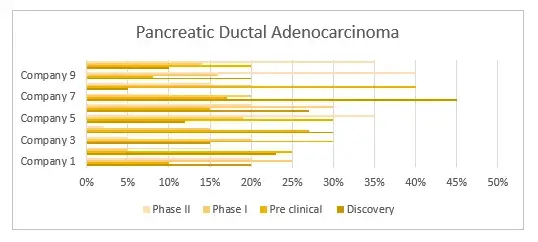
The involvement of stakeholders in formulating treatments for Pancreatic Ductal Adenocarcinoma (PDAC) is illustrated, including information about finances, product lineup, and recent developments.

Examining patents provides invaluable insights into revolutionary breakthroughs and emerging technologies in the field of Pancreatic Ductal Adenocarcinoma (PDAC), enhancing our deeper understanding of innovative treatment approaches.

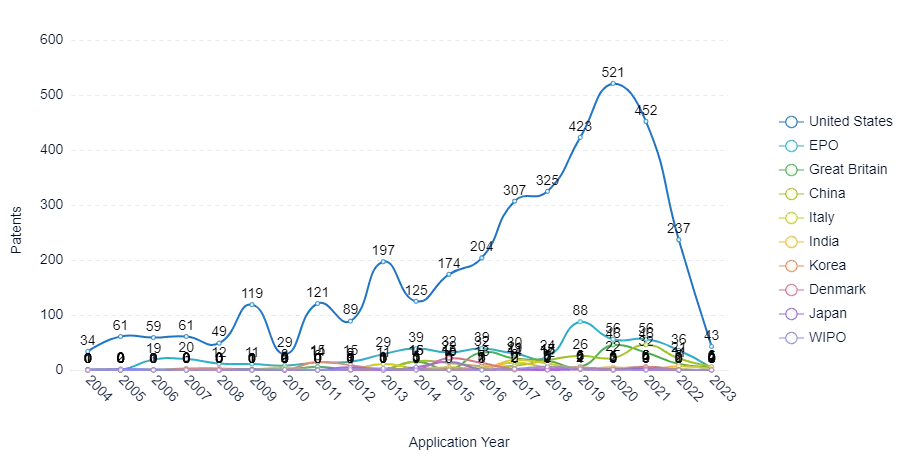
Several drugs/therapies have undergone evaluation in clinical trials registered across various regions, progressing to advanced stages of development over the past five years for Pancreatic Ductal Adenocarcinoma (PDAC).
Example illustration 1: Distribution of Clinical Trials by Status:
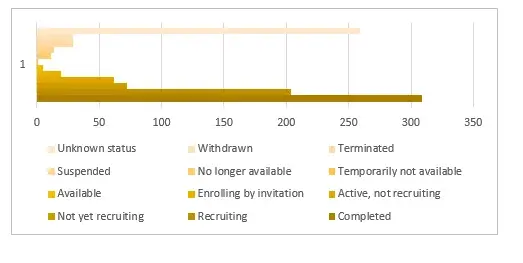
Example illustration 3: Distribution of Clinical Trials by Phase of Development:
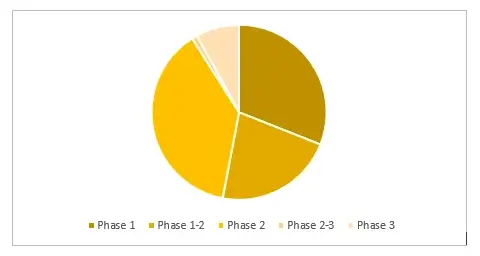
With the endorsment of multiple promising drug candidates and favorable clinical results, the market is stratified into diverse segments, primed for significant expansion in the approaching decade.

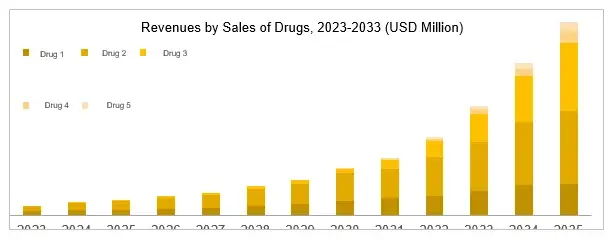
Due to the presence of numerous companies operating in the field of Pancreatic Ductal Adenocarcinoma (PDAC), potential competitors may exist in the market striving for dominance.
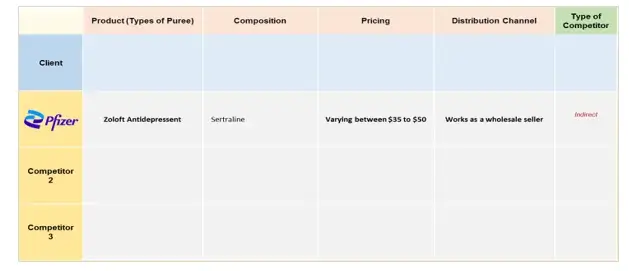
Analyze existing drug candidates and patents to identify novel treatment approaches and trends in PDAC.
Explore market attractiveness, growth prospects, and investment opportunities in the PDAC market.
Understand the present market size, patient demographics, and emerging trends shaping the PDAC market’s future.
Assess upcoming PDAC treatments, their effectiveness, and potential market influence.
Examine ongoing clinical trials to reveal the latest advancements and treatment development in PDAC.
Learn about influential organizations driving PDAC research, their strategies, and market presence.
In order to give the most precise estimations and forecasts, Wissen Research uses an extensive and iterative research approach that is focused on reducing deviation. The company blends top-down and bottom-up methodologies for market segmentation and quantitative estimation. In addition, data triangulation, which examines the market from three separate angles, is a recurrent topic present in all of our research studies. Important components of the approach used for all of our studies include the following:
Preliminary data mining
On a wide scale, unprocessed market data is collected. Continuous data filtering makes sure that only verified and authenticated sources are taken into account. Additionally, data is extracted from a wide range of reports in our repository and from a number of reputable premium databases. We gather information from raw material suppliers, distributors, and purchasers to help with this since understanding the entire value chain is crucial for a thorough understanding of the market.
Surveys, technical symposia, and trade magazines are used to gather information on technical concerns and trends. Technical information focusing on white space and freedom of movement is also obtained from an intellectual property standpoint. Additionally, information on the industry’s drivers, constraints, and pricing patterns is obtained. As a result, a variety of original data are included in the material that is then cross-validated and certified with published sources.
Statistical model
We use simulation models to generate our market projections and estimates. Every study receives a special model that is tailored to it. Data for market dynamics, the technology environment, application development, and pricing patterns are gathered and supplied into the model all at once for analysis. The relative relevance of these factors is investigated, and their impact on the forecast period is assessed, using correlation, regression, and time series analysis. The process of market forecasting combines technological analysis with economic strategies, practical business acumen, and subject expertise.
Econometric models are frequently used for short-term forecasting, but technology market models are typically employed for long-term forecasting. These are based on a confluence of the business environment, regulatory environment, economic projection, and technical landscape. In order to develop global estimates, it is preferable to estimate markets from the bottom up by integrating data from key regional markets. This is required to ensure accuracy and a complete comprehension of the subject. Among the variables taken into account for forecasting are:
Regulations and anticipated developments
We give these criteria weights and use weighted average analysis to assess their market influence in order to calculate the anticipated market growth rate.
Primary research | Secondary research |
· Manufacturers · Technology distributors and wholesalers · End-user surveys · Consumer surveys | · Company reports and publications · Government publications · Independent investigations · Economic and demographic data · Online searches · Literature studies · Research reviews · Case studies · Reference customers |
1.1 Overview of Pancreatic Ductal Adenocarcinoma (PDAC)
1.1.1 Definition and Classification of PDAC
1.1.2 Incidence and Prevalence of PDAC
1.2 Epidemiology and Incidence Rates
1.2.1 PDAC Incidence across Different Geographies
1.2.2 Prevalence and Associated Factors
1.3 Clinical Presentation and Diagnosis
1.3.1 Common Symptoms and Early Signs of PDAC
1.3.2 Diagnostic Methods and Imaging Techniques
1.4 Pathophysiology and Molecular Mechanisms
1.4.1 Underlying Biological Pathways of PDAC
1.4.2 Genetic and Molecular Alterations
1.5 Risk Factors and Etiology
1.5.1 Factors Contributing to PDAC Development
1.5.2 Known Risk Factors and Environmental Influences
2.1 Disease Progression and Staging
2.1.1 Stages of PDAC and Tumor Growth
2.1.2 Prognostic Factors and Predictive Markers
2.2 Treatment Landscape and Current Interventions
2.2.1 Surgical, Medical, and Radiation Therapies
2.2.2 Multidisciplinary Approaches and Personalized Care
2.3 Emerging Therapies and Novel Approaches
2.3.1 Targeted Therapies and Immunotherapies
2.3.2 Investigational Agents and Future Directions
3.1 Ongoing Clinical Studies and Trial Progress
3.1.1 Promising Trials and Patient Enrollment
3.1.2 Emerging Treatment Modalities
3.2 Innovative Treatment Strategies
3.2.1 Novel Drug Candidates and Therapeutic Innovations
3.2.2 Potential Impact on PDAC Management
3.3 Interventional Procedures and Surgical Innovations
3.3.1 Minimally Invasive Techniques and Surgical Outcomes
3.3.2 Advancements in Interventional Radiology
4.1 Global PDAC Market Overview
4.1.1 Market Size and Growth Projections
4.1.2 Geographical Distribution of PDAC Cases
4.2 Market Trends and Developments
4.2.1 Advancements in Therapeutic Approaches
4.2.2 Emerging Technologies and Diagnostics
4.3 Market Drivers and Challenges
4.3.1 Factors Influencing Market Dynamics
4.3.2 Addressing Challenges in PDAC Treatment
5.1 North America
5.1.1 Market Trends and Forecast
5.1.2 Regulatory Landscape and Market Opportunities
5.2 Europe
5.2.1 Market Trends and Forecast
5.2.2 Emerging Therapeutic Strategies
5.3 Asia-Pacific
5.3.1 Market Trends and Forecast
5.3.2 Evolving Treatment Landscape
5.4 Rest of the World
5.4.1 Market Trends and Forecast
5.4.2 Unique Challenges and Market Entry Strategies
6.1 Leading Organizations in PDAC Treatment
6.1.1 Key Players and Market Presence
6.1.2 Product Portfolios and Research Initiatives
6.2 Company Profiles and Collaborations
6.2.1 Business Strategies and Partnerships
6.2.2 Collaborative Efforts and Industry Alliances
7.1 Key Patents in PDAC Treatment
7.1.1 Patent Landscape and Innovations
7.1.2 Notable Patent Holders and IP Trends
8.1 Projected Growth of PDAC Market
8.1.1 Market Size and Revenue Projections
8.1.2 Opportunities and Forecast Factors
8.2 Emerging Market Opportunities and Regions
8.2.1 Untapped Markets and Strategic Expansion
8.2.2 Potential Regions for Market Penetration
S.no | Key Highlights of Report | |
1. | Patent Analysis | · Top Assignee · Geography focus of top Assignees · Assignee Segmentation · Network analysis of the top collaborating entities in Pancreatic Ductal Adenocarcinoma (PDAC) patent applications · Technology Evolution · Key Patents · Application and Issued Trend · Key Technology |
2. | Market analysis | · Current Treatment Options · Emerging Therapies and Research Developments (by product analysis and scientific analysis) · Strategic activities · Therapeutic activity of drugs · Company portfolio |
3. | Clinical Trials | · Analysis of clinical trial through graphical representation · Coverage of treatments from pre-clinical phases till commercialization (also including terminated and completed studies) |
4. | Forecast | · Detailed comprehension of the historic, current and forecasted trend of market by analysis of impact of these treatments on the market |
5. | Key Players | · Detailed profiles of the key players that are engaged in the development of approved drugs |
6. | Strategic activities of companies | · Collaboration/Mergers/Agreements/Partnerships/Acquisitions taken place by analyzed companies |
7. | Opportunity Analysis | · Technology evolution based on problem solution · Potential licensees · Geography of suppliers · Treatment trends |
8. | KOLs | · A detailed analysis and identification of the key opinion leaders (KOLs), shortlisted based on their contributions |
9. | SWOT | · SWOT analysis for treatments · Market Access |
10. | Drivers and Barrier | · Unmet needs · Drivers and barriers · Opportunity for new treatments |
LIST OF FIGURES
Figure number | Description |
Figure 1 | Terminology of Pancreatic Ductal Adenocarcinoma (PDAC) Over The Years |
Figure 2 | Pancreatic Ductal Adenocarcinoma (PDAC) Treatment– History and Present |
Figure 3 | Projection of Pancreatic Ductal Adenocarcinoma (PDAC) till 2033 in different geographies |
Figure 4 | Technology Categorization Of Drug Delivery Methods For Pancreatic Ductal Adenocarcinoma (PDAC) |
Figure 5 | Recent Technology Trends in Pancreatic Ductal Adenocarcinoma (PDAC) |
Figure 6 | Technology Evolution in Drug Delivery Market of Pancreatic Ductal Adenocarcinoma (PDAC) |
Figure 7 | Geographical Distribution of Patents of Top Assignees |
Figure 8 | Assignee Segmentation (Companies) |
Figure 9 | Assignee Segmentation (Educational Establishment) |
Figure 10 | Patent Based Key Insights Of xx |
Figure 11 | Patent Based Key insights of xx |
Figure 12 | Patent Based Key insights of xx |
Figure 13 | Geographic Distribution of the Universities/Research Organizations Filling Patents On Various Drug Delivery Approaches |
Figure 14 | Key Summary Regarding the Patent Filing On Pancreatic Ductal Adenocarcinoma (PDAC) |
Figure 15 | Product Pipeline of Different Approaches with Companies Name |
Figure 16 | Portfolio for Approved Product |
Figure 17 | Clinical Trials Conducted till Date by Different Companies and Universities |
Figure 18 | Clinical Trials based Key Insights |
Figure 19 | Key Growth Drivers for Pancreatic Ductal Adenocarcinoma (PDAC) Market |
Figure 20 | Restraints for Pancreatic Ductal Adenocarcinoma (PDAC) Market |
Figure 21 | xx Portfolio (Top Player) |
Figure 22 | xx Portfolio (Top Player) |
Figure 23 | xx Portfolio (Top Player) |
Figure 24 | xx Portfolio (Top Player) |
Figure 25 | xx Portfolio (Top Player) |
Figure 26 | xx Portfolio (Start-up) |
Figure 27 | xx Portfolio (Start-up) |
Figure 28 | xx Portfolio (Start-up) |
Figure 29 | Strategic Activities Including Collaboration, Partnerships and Acquisitions |
Figure 30 | Research Methodology for Patent, Selection and Analysis |
Figure 31 | Research Methodology for Scientific Literature, Selection and Analysis |
Figure 32 | Research Methodology for Clinical Trials, Selection and Analysis |
LIST OF GRAPHS
Graph number |
Description |
Graph 1 | Number of people worldwide with Pancreatic Ductal Adenocarcinoma (PDAC) |
Graph 2 | Problem Solution Analysis |
Graph 3 | Top Assignees in Pancreatic Ductal Adenocarcinoma (PDAC) |
Graph 4 | Technology Focus of Top Assignees (IPC-CPC Classes) |
Graph 5 | Top Countries of Origin of Patents |
Graph 6 | New entrants in drug delivery field |
Graph 7 | Legal Status |
Graph 8 | Most Cited Patents |
Graph 9 | Patents with Largest Invention Families |
Graph 10 | Most Claim-Heavy Patents |
Graph 11 | Filing Trends |
Graph 12 | Literature Filling Trend During Time Period (2018 – 2023) |
Graph 13 | Clinical Trial Filing Timeline |
Graph 14 | Recruitment Status of the Clinical Trials Related to the Different Drug Delivery Approaches |
Graph 15 | Clinical Trials Phases with Respect to Specific Drug Delivery Approach |
Graph 16 | Weighted Scores for Top 64 Players According to Benchmarking Criteria |
Graph 17 | Pancreatic Ductal Adenocarcinoma (PDAC) (CAGR: 2023-2033) |
Graph 18 | Pancreatic Ductal Adenocarcinoma (PDAC) Market Share: Distribution by Key Geographical Area, 2023-2033 |
LIST OF TABLES
Table number | Description |
Table 1 | Parameters included and excluded for conducting the analysis |
Table 2 | Technology Classes with Definitions |
Table 3 | Patent Litigation |
Table 4 | Highest Market Valued Patents |
Table 5 | SWOT Analysis of Top 3 Players |
Table 6 | Parameters and their score for Benchmarking |
Table 7 | Weighted scores for top 5 players according to benchmarking criteria |
© Copyright 2024 – Wissen Research All Rights Reserved.